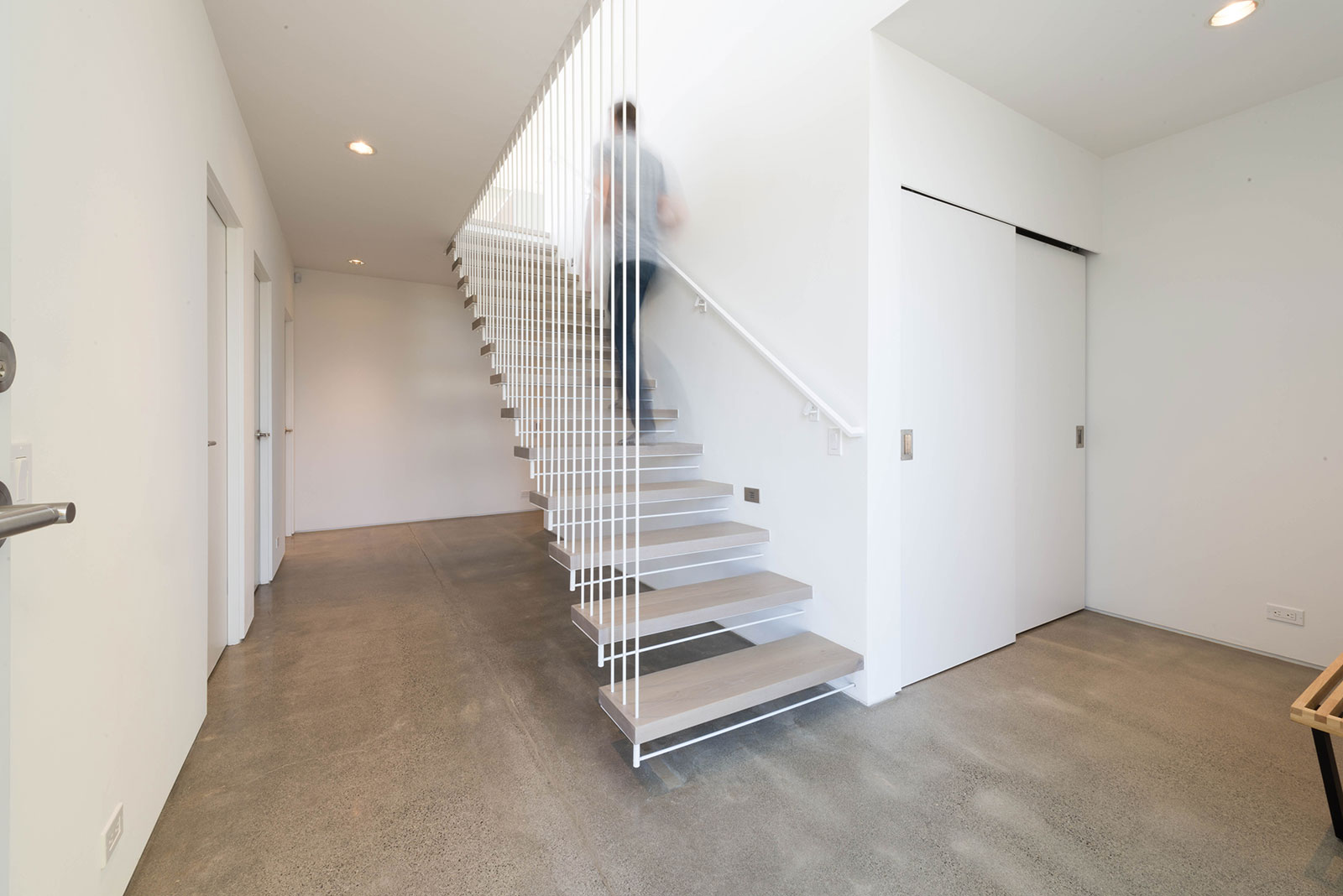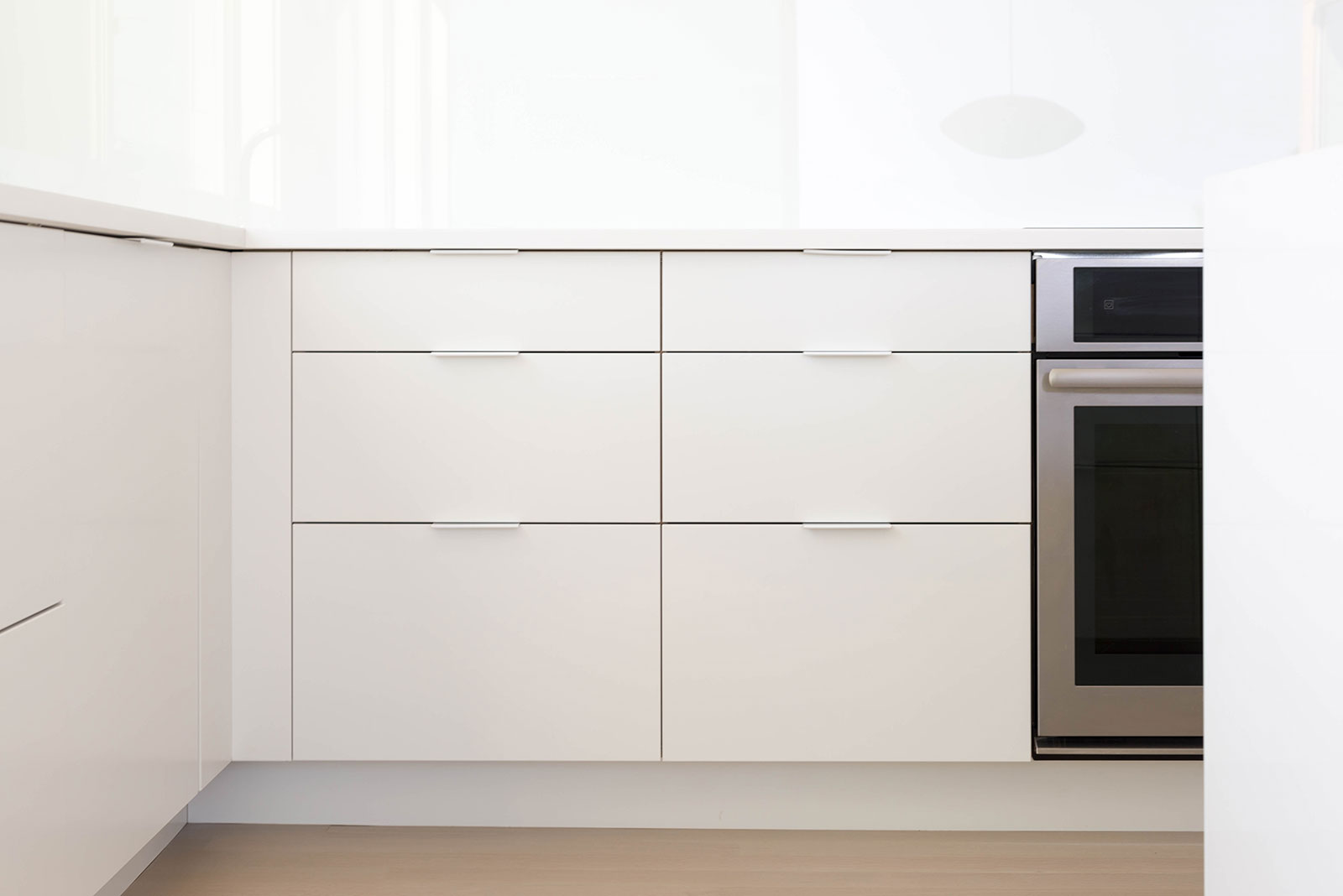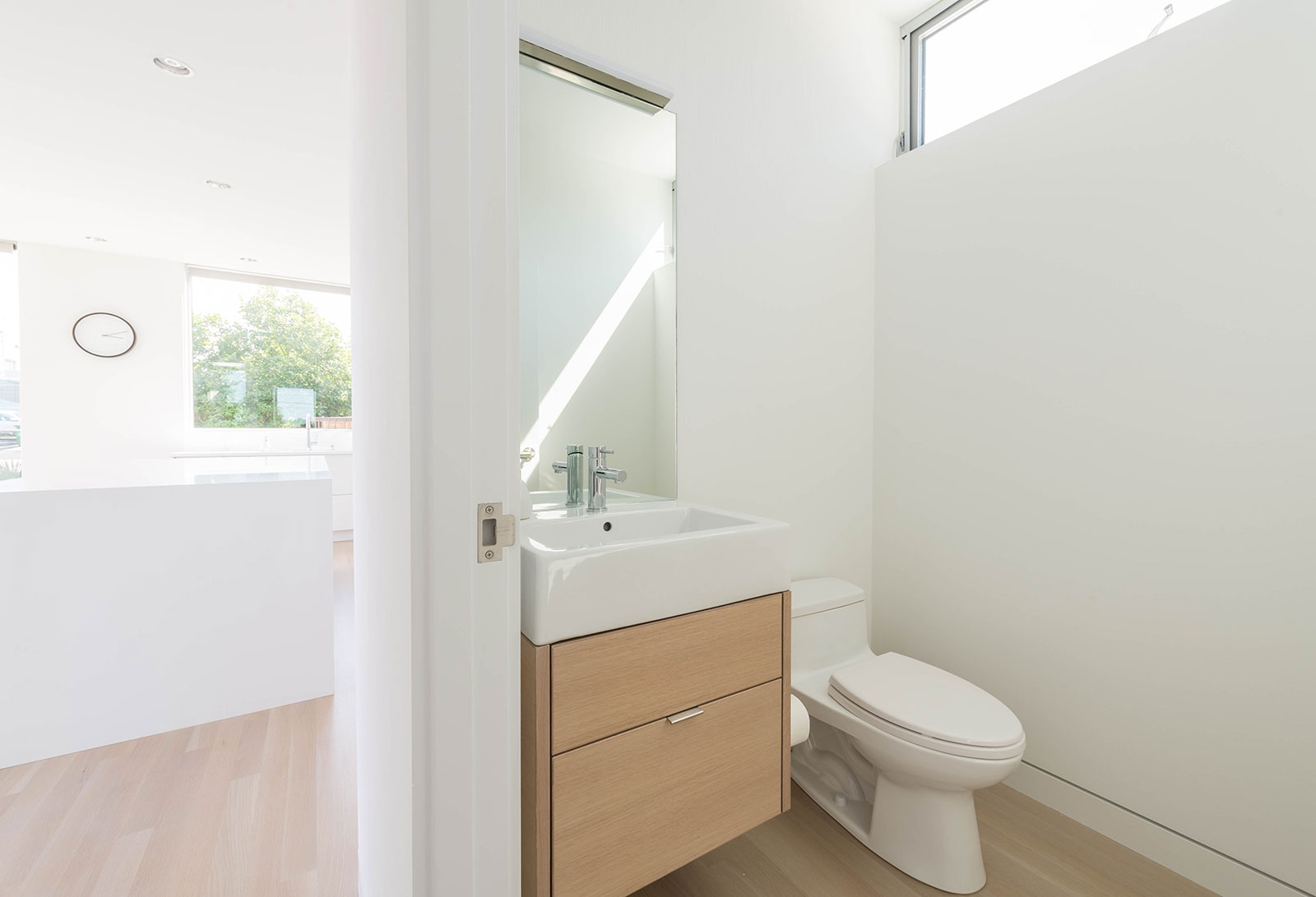Among the challenges an architect faces, minimalist design is perhaps the most demanding; beyond an exercise of removal and curation, true minimalism demands a distinctive skill set. Because there is typically little latitude for screening or concealing, minimalist design requires a perfect marriage between structure and aesthetic. It calls for judicious consideration of all specifications, as every piece of infrastructure and appliance must make sense in the space—to be sure, these utilitarian elements can fortify or bankrupt the harmony of a room. Minimalism has low tolerance for an architect’s style or idiosyncrasies, and it does not depend upon the poetics of architecture.
BUILD recently completed this exercise on a residential project in Seattle’s Queen Anne Hill neighborhood, and while we’ve examined interior finishes and specifications in past blog posts, for the reasons outlined above we feel that the unique nature of this latest project merits its own reflection. Today’s post exposes the specifications and finishes for a refined, modern, minimalist residence, with a sprinkling of lessons learned when working to achieve an added level of elegance in a minimalist design.
The program for the Queen Anne Residence called for a white interior that was one step brighter than most of our projects, so we specified Sherwin Williams Extra White SW 7006. We prefer a matte finish on walls and ceilings for a museum quality aesthetic, and we finish millwork and doors in satin for easier cleaning.
Nothing provides harmony between structure and aesthetic as powerfully as an exposed concrete slab on grade. The ground floor portion was polished with a clear finish, and leverages the fine-grain aggregate as texture.
At the exterior and interior door handles, for consistency we used similar specifications: the Karcher New York UER65 handle in stainless steel can be ordered with or without a privacy lock for interior applications, and may be paired with Karcher’s UEDB single cylinder deadbolt for exterior doors. The closet pulls on the bypass doors are the McMaster Carr flush pull #1634A44 in type 304 stainless steel.
An open tread steel stair extends to the upper level, and a series of steel tension rods that support the tread edges provide texture; the opposite side of the treads is supported by a steel angle buried under the gypsum wall board, and attached directly to the wall framing and blocking. In addition to providing structural support for the treads, the rods perform double duty as a guardrail at the stair, which rises above 30”. Attenuated horizontal rods above and below each tread preserve the vertical distance between the treads to less than the code maximum of four inches. The oak treads were stained to match the upper level floor, and all steel, including the wall mounted handrail, was painted white to enhance the form and downplay the color at this location.
Upstairs, the guardrail aligns with the steel tension rods below; but the more minimal (and functional) design decision here was to orient the rods horizontally, which allows them to serve a life safety function. Because of this orientation shift, we used stainless steel to distinguish these non-structural components from the tension rods below—and the metal more closely matches the finish of the clear anodized aluminum windows in the living room. For added structural integrity, the guardrail was mounted to the side of the stair opening, and the framing was padded out to finish the opening and conceal the guardrail connection.
We used 3” wide rift-sawn & quarter-sawn solid oak floors with a light gray stain upstairs, concrete slab-on-grade at the ground floor; the solid oak floors above provide an excellent visual complement and benefit from radiant in-floor heat thanks to the stability of the material.
The design employs the reverse floor plan concept, which situates the kitchen, dining room, living room, and home office on the upper floor.
In the kitchen, the cabinets painted with white gloss were matched with Pentalquartz BQ100P Thassos polished, 3cm thick countertops, which wrap down the sides of the island. An oak veneer plywood panel, stained to match the floor, was applied to the island’s inset seating area. Back at the cabinet wall, a non-directional stainless steel sink (28” x 16” x 11” deep), custom designed by BUILD and fabricated by Metalmasters, provides straight-forward functionality. Because this sink design was kept simple, it’s less expensive than most prefabricated versions of similar dimensions. The sink was paired with the Brizo Solna 63020LF-PC, single handle faucet with pull down spray head in chrome (polished chrome is significantly more cost-effective than any of the brushed finishes, which can add hundreds of dollars to the fixture cost). The countertop backsplashes are made of Starphire glass with a white backing from Hartung. White, high-gloss cabinet pulls from Atlas provide the finishing touch on the kitchen cabinets by Griffin Cabinets.
The appliance roster (shown below) includes a line-up of highly functional, cost-effective, models that were chosen for their clean lines and less-is-more aesthetic.
Refrigerator: Jenn-Air JF42NXFXDE w/ integral cabinet face. Order with the W10250636 Euro-style bar handle to match the other appliances.
Cooktop: Jenn-Air JIC4430XB 4-burner induction in black glass. We like to use induction inside paired with a gas BBQ outside for the best of both worlds.
Wall Oven: Jenn-Air JJW3430DS in stainless steel
Hood: Vent-a-hood CWLH9-130-SS. This hood can be concealed inside the upper cabinet for a minimal aesthetic. For this project, it’s vented straight out the back so that it doesn’t conflict with the clerestory windows above.
Dishwasher: Bosch SHV7PT53UC with integral cabinet face.
Note: the model numbers of kitchen appliances change nearly every year as updates and improvements are made, but most appliance shops can recommend the new model based on a former model number. BUILD recommends Metropolitan Appliance.
Discretely tucked behind the kitchen and out of site of the dining room, a small powder room includes oak veneer cabinets to match the flooring, with a Mockett DP3 tab pull in satin chrome. The Lacava Aquagrande #5464, single-hole, porcelain, box sink was outfitted with a Riobel GS01 faucet in polished chrome. BUILD recommends selecting the sink box first, then designing the cabinet box around its dimensions. For a minimal look, the backsplash was eliminated and the mirror was brought down to the sink. A Toto MS864114#01 Ultimate elongated one-piece toilet in white was supplemented with the SS114 soft-close seat.
Finally, the home office may offer the most important minimalist move yet. By using site characteristics already in place, color and texture enhance the interiors through the placement of windows with strategic views—such as positioning the office window to frame a stunning elm tree across the street.
Minimalism isn’t just an aesthetic, but a design and construction philosophy. A successful product requires thinking through each situation and every connection well in advance of the construction process. Getting out in front of the on-site assemblies allows time to solve challenges elegantly, and affords opportunities for clean design. Interestingly, the ultimate goal of superb minimalism is what you don’t notice.
Cheers from team BUILD
















